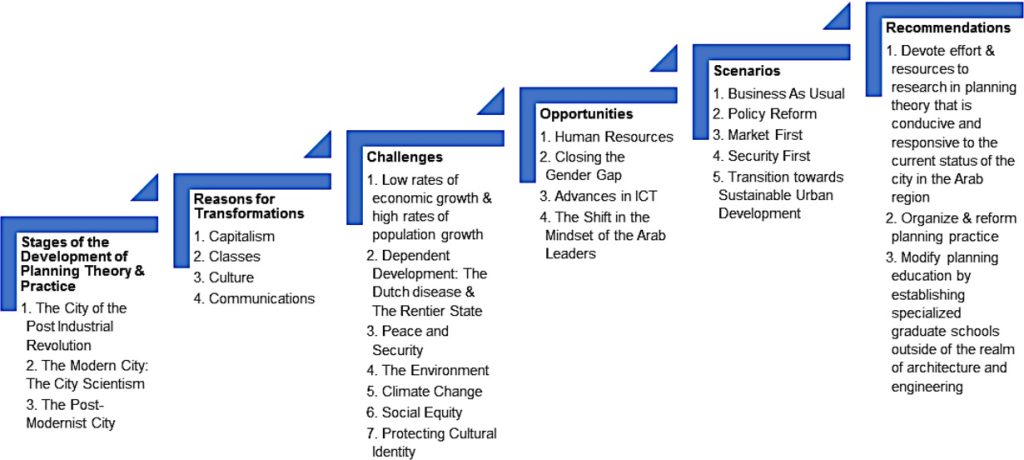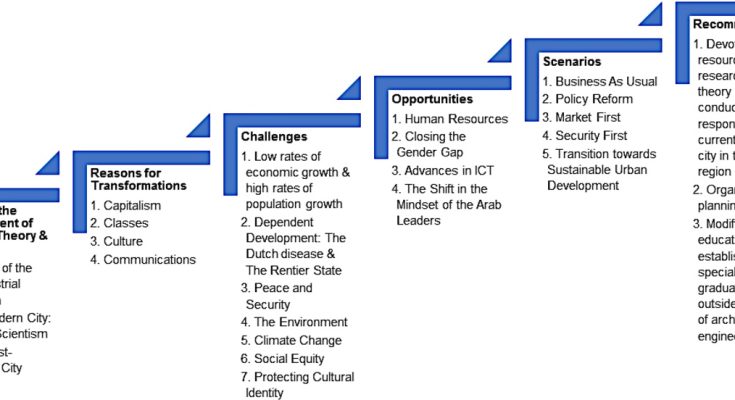Introduction
Planning theory and practice encompass the principles, methodologies, and strategies used in the field of urban and regional planning to shape the development and organization of cities, towns, and regions. It involves understanding the social, economic, environmental, and political factors that influence spatial patterns and human activities. This discipline aims to create sustainable, equitable, and functional urban environments that enhance the quality of life for all residents.

The Evolution of Planning Theory
Planning theory has evolved significantly over the past century, reflecting changes in societal values, technological advancements, and political contexts. The evolution of planning theory can be broadly categorized into several key phases:
Rational Comprehensive Planning (Early 20th Century):
- Key Characteristics: Emphasis on scientific analysis, systematic data collection, and rational decision-making. Planners acted as experts who analyzed problems and proposed optimal solutions.
- Critique: Criticized for being overly technocratic, top-down, and insensitive to local needs and values.
Advocacy Planning (1960s-1970s):
- Key Characteristics: Emerged as a response to the limitations of rational planning. Advocacy planning emphasized the role of planners as advocates for marginalized and underrepresented communities.
- Critique: While it democratized the planning process, it sometimes led to fragmented and conflicting interests.
Communicative Planning (1980s-1990s):
- Key Characteristics: Focused on participatory processes and consensus-building. It recognized the importance of dialogue, negotiation, and collaboration among stakeholders.
- Critique: Critics argue that it can be time-consuming and may not always lead to actionable outcomes.
Sustainable Planning (2000s-Present):
- Key Characteristics: Integrates environmental sustainability into planning practices. Emphasizes resilience, green infrastructure, and climate change adaptation.
- Critique: Balancing sustainability with economic growth and social equity remains a challenge.
Core Principles of Planning Theory
Public Interest:
- Planners must prioritize the public interest, balancing individual rights with the collective good. This involves making decisions that promote long-term benefits for the community.
Equity and Justice:
- Ensuring that planning processes and outcomes are fair and inclusive. This includes addressing disparities in access to resources, services, and opportunities.
Sustainability:
- Integrating environmental, social, and economic sustainability into planning decisions. This principle aims to create resilient and adaptable urban environments.
Participation and Democracy:
- Encouraging public participation in the planning process. Effective planning requires engaging diverse stakeholders and fostering a democratic decision-making process.
Adaptability and Flexibility:
- Recognizing that cities and regions are dynamic and ever-changing. Planners must be adaptable and responsive to new challenges and opportunities.
Planning Practices and Methodologies
Land Use Planning:
- Involves the regulation of land use to ensure orderly development. Zoning, subdivision regulations, and land use policies are key tools in this practice.
- Example: Creating mixed-use developments that combine residential, commercial, and recreational spaces to promote walkability and reduce reliance on cars.
Transportation Planning:
- Focuses on the development of efficient and sustainable transportation systems. This includes the planning of roads, public transit, bike lanes, and pedestrian pathways.
- Example: Implementing a comprehensive public transit network to reduce traffic congestion and lower carbon emissions.
Environmental Planning:
- Aims to protect and enhance the natural environment through sustainable development practices. This involves managing natural resources, mitigating environmental impacts, and promoting green infrastructure.
- Example: Designing urban green spaces and parks to improve air quality, provide recreational opportunities, and support biodiversity.
Economic Development Planning:
- Focuses on strategies to promote economic growth and development. This includes attracting businesses, creating jobs, and supporting local economies.
- Example: Developing business improvement districts (BIDs) to revitalize downtown areas and attract investment.
Community and Social Planning:
- Addresses social issues and aims to improve the quality of life for all residents. This involves planning for housing, healthcare, education, and social services.
- Example: Implementing affordable housing initiatives to ensure that low-income families have access to safe and decent housing.
Urban Design:
- Concerned with the aesthetic and functional aspects of urban spaces. This includes the design of public spaces, streetscapes, and buildings.
- Example: Designing pedestrian-friendly streetscapes with wide sidewalks, street trees, and public art to enhance the urban experience.
Challenges in Planning Practice
Balancing Competing Interests:
- Planners often face the challenge of balancing competing interests and priorities. This includes reconciling the needs of different stakeholders, such as residents, businesses, and government agencies.
Resource Constraints:
- Limited financial and human resources can constrain the ability to implement planning initiatives. Planners must often find creative solutions to achieve their goals within these constraints.
Political and Institutional Barriers:
- Planning decisions can be influenced by political and institutional factors. Navigating these barriers requires strong communication and negotiation skills.
Climate Change and Resilience:
- Addressing the impacts of climate change and building resilient communities is a critical challenge. Planners must develop strategies to mitigate and adapt to these impacts.
Technological Advancements:
- Rapid technological advancements are transforming urban environments. Planners must stay abreast of these changes and integrate new technologies into their practices.
Conclusion
Planning theory and practice are essential for shaping the development and organization of urban and regional environments. By understanding and applying core principles, planners can create sustainable, equitable, and functional cities and regions. Despite the challenges, effective planning can enhance the quality of life for all residents and contribute to the creation of vibrant, resilient communities. As the field continues to evolve, planners must remain adaptable and responsive to new challenges and opportunities, ensuring that their practices are informed by the latest advancements in theory and technology.




